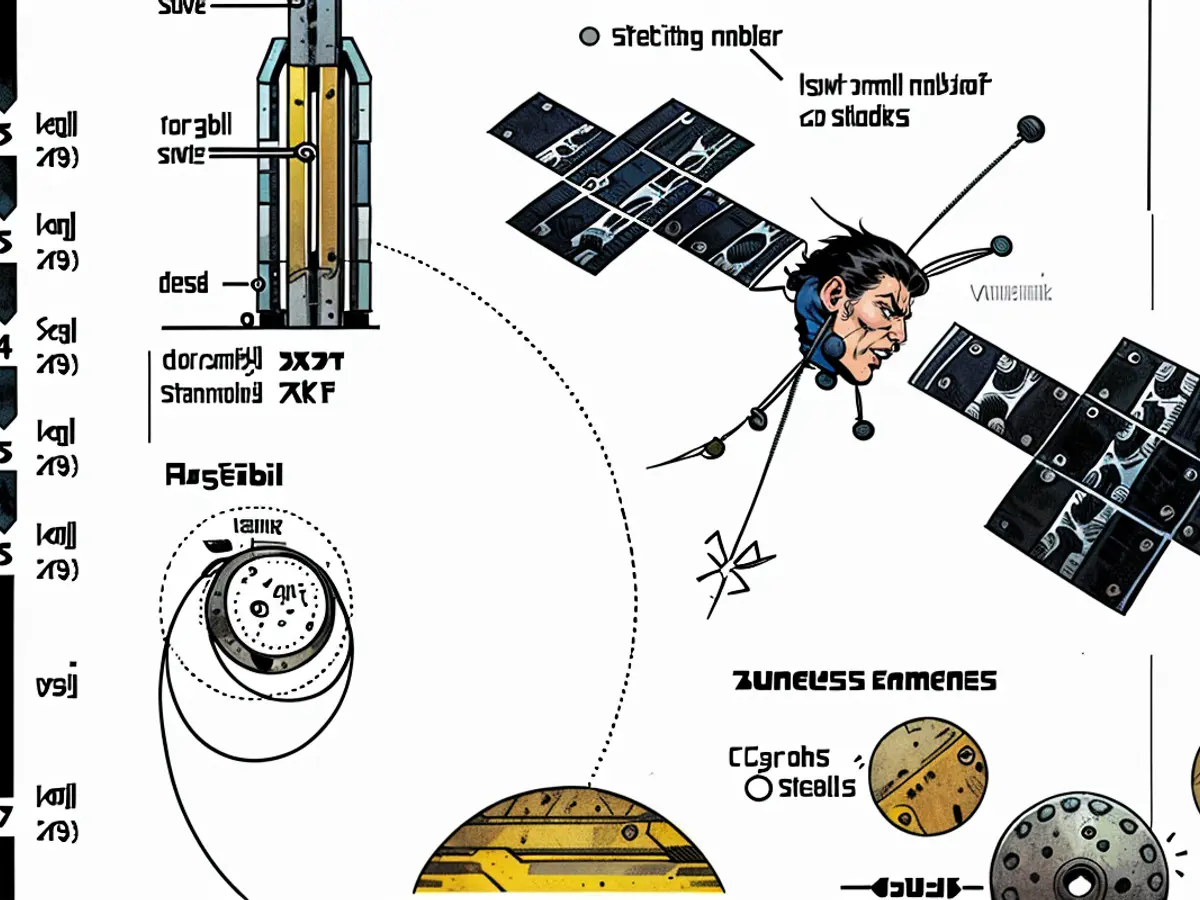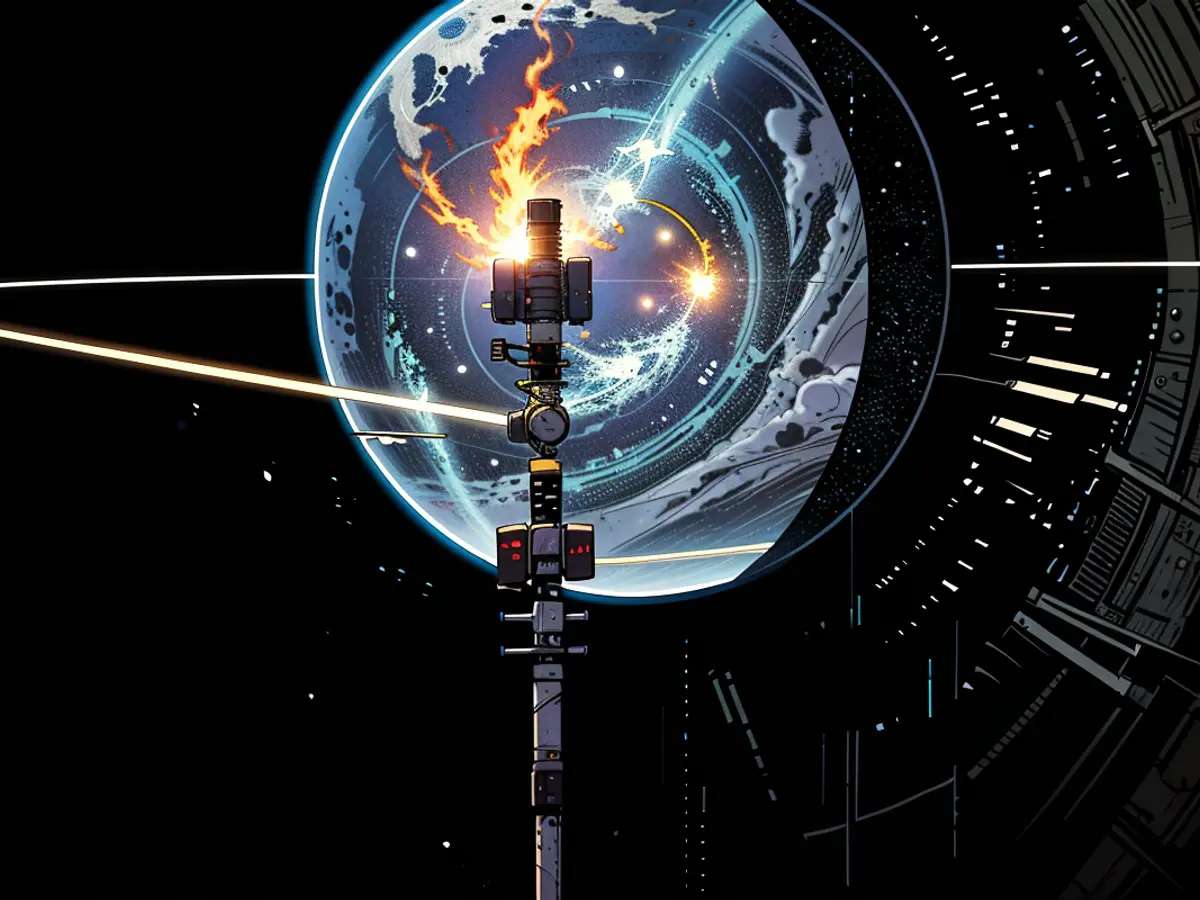Jupiter's Spacecraft Triumphs in Daring Approach Near Planet Earth
The "Juice" spacecraft, tasked with investigating Jupiter's moons, first needs to make passes by the Moon and Earth. This intricate maneuver utilizes the gravitational pull of both celestial bodies. Amazingly, everything goes smoothly - a misstep could have had dire consequences.
The European Space Agency (ESA) has triumphantly declared that the first joint flyby of the Moon and Earth in a 24-hour period has been flawlessly executed. The "Juice" spacecraft skimmed just 6,840 kilometers above Southeast Asia and the Pacific Ocean, capturing images with its onboard cameras and gathering scientific data using eight of its ten tools. This masterful move, orchestrated from the Darmstadt control center, was executed with ease and precision. According to the control center's head, Simon Plum, it surpassed their expectations.
This maneuver slashed the mission's fuel consumption by roughly 100 to 150 kilograms, enabling a closer approach to Jupiter's moon Ganymede than initially projected. Alternatively, the mission duration could be extended, as per Plum's assessment.
The purpose of the flyby was to alter "Juice"'s trajectory in space. To accomplish this, the gravitational force of the Moon was followed by the Earth's force to modify the spacecraft's speed and direction. "Juice" glided past the Moon at an altitude of approximately 750 kilometers before drawing nearer to Earth. The spacecraft is now en route to Venus. As operations scientist Claire Vallat explained, "This strategic double flyby gives us a comprehensive understanding of the Juice instruments' performance."
Minute mistake, massive consequence
Prior to the flyby, the ESA characterized the "Juice" (Jupiter ICy moons Explorer) maneuver as a formidable task that no other space mission had attempted. Experts cautioned that even the slightest slip-up could send "Juice" off-course, signaling the end of the mission.
Having traveled for several years, "Juice" is about to closely examine Europa, Callisto, and Ganymede, Jupiter's moons, in detail, starting in 2031. Researchers speculate that water may reside beneath these moons' kilometer-thick icy crusts, potentially generating conditions favorable to life. The mission at Jupiter is expected to span from 2031 to 2035.
The success of the flyby underscores the importance of precise calculations in space missions, highlighting the role of education in equipping engineers and scientists with the necessary skills. Proper education in physics, mathematics, and engineering is crucial for understanding the complex gravitational interactions involved in such maneuvers.
Furthermore, the data gathered during this mission could contribute significantly to the scientific community, emphasizing the value of ongoing education and research in the field of astrobiology. As we explore the possibility of life beyond Earth, it becomes increasingly important to invest in education and encourage young minds to pursue careers in space science.








